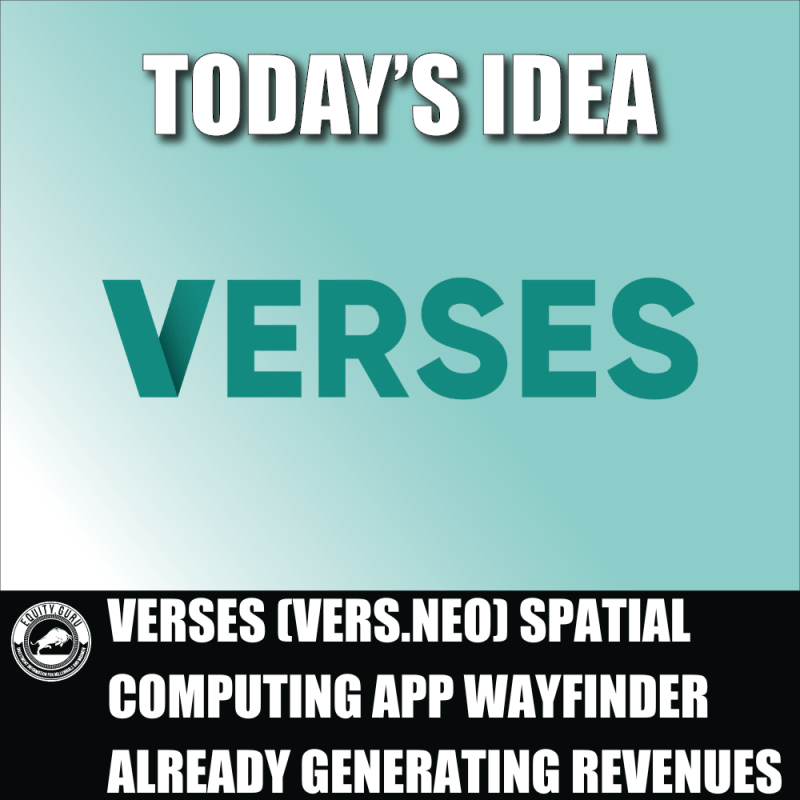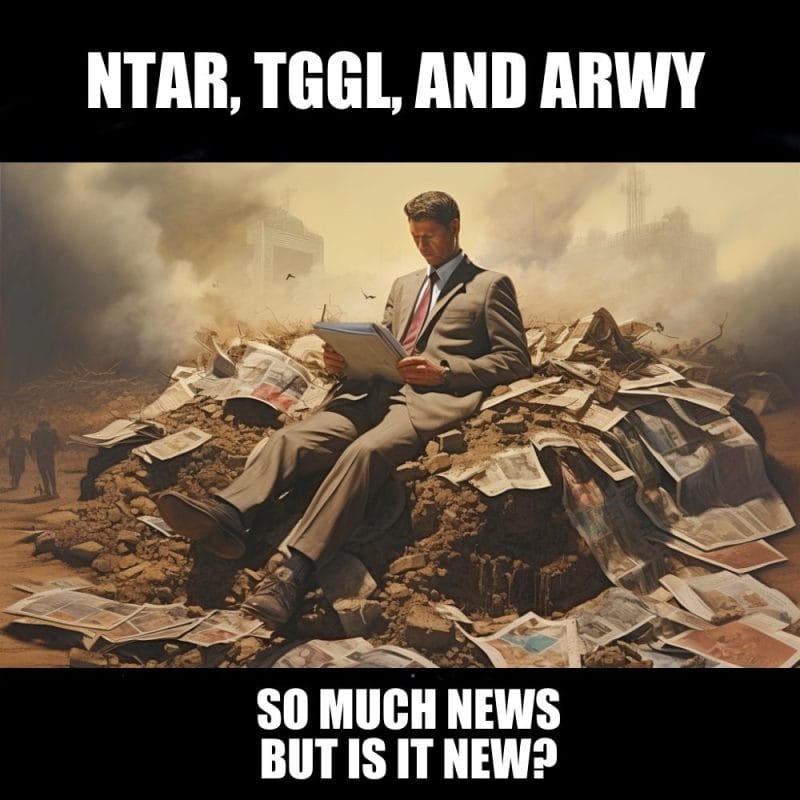Spatial computing is not doing-your-taxes while riding a rocket ship – it’s a new technology that is transforming eCommerce, and creating wealth for early investors.
“Spatial computing refers to the process of leveraging digital technology to enable computers to interact seamlessly in a 3-D world – using Augmented Reality (AR), Virtual Reality (VR), and Mixed Reality (MR),” states neuroscientist Gabriel Axel Montes, PHD.
“Spatial computing brings the real world and digital world together to make our reality and computer landscape intertwined,” added Montes, “It explains how humans are increasingly stepping into the world of computers in order to engage with immersive technology, rather than interacting with it from a physical world.”
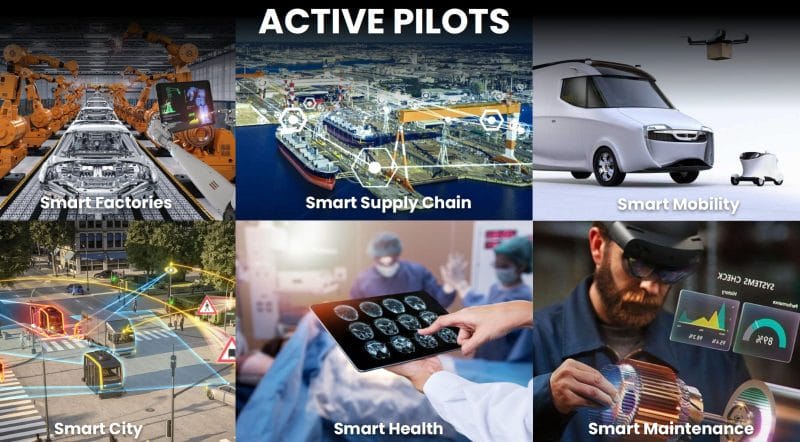
Verses Technologies (VERS.NEO) is a next-generation AI company providing foundational technology for the contextual computing era.
Companies like Tesla, Alphabet, Snap and Warby Parker are investing billions of dollars in spatial computing.
Real world examples include using Virtual Reality (VR) and Augmented Reality (AR) Applications to let shoppers ‘try on’ clothes, lipstick and glasses without physically entering a store.
Spatial computing allows furniture shoppers to project an image of a new couch into their own living room. They can rotate it, change the colour of the cushions, view the couch with an overhead light. This technology reduces brick & mortar expenses – while increasing sales conversion rates.
Traditional PDF user manuals are also being replaced by spatial computing applications. A consumer who buys a drone, can practice flying in a virtual world where they can create wind, rain or other real-world challenges.
On August 29, 2022, VERS closed the final tranche of its previously announced oversubscribed private placement securing total gross proceeds of $14.96 million CAD.
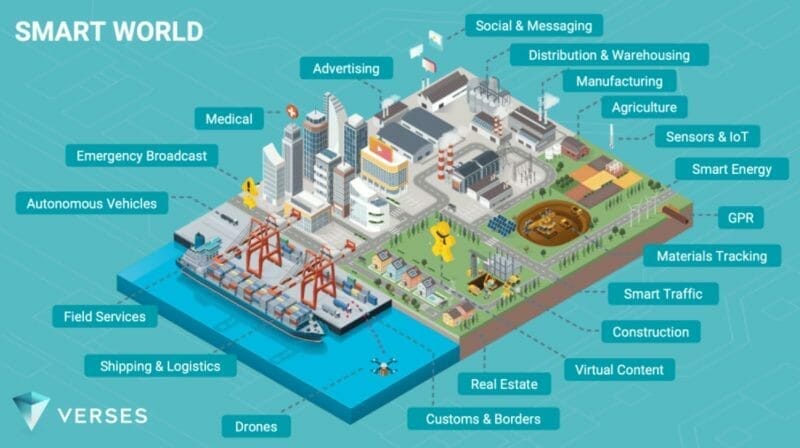
The Wayfinder app is powered by VERSES spatial networking technology.
Wayfinder utilizes spatial intelligence and AI to create a 3D twin model of a warehouse, allowing optimization of inventory location, storage space, and inventory flow for greater efficiency. The following are some benefits and features of Wayfinder:
- Improved inventory turnover: Wayfinder allows workers to pick more items within the same allotted person-hours.
- Unmatched compatibility: Wayfinder is compatible with handheld mobile devices and hands-free AR.
- 3D-visual and voice guidance: This feature allows pickers to go to the exact location of items in less time with minimal effort. It evaluates and plugs optimum routes for workers in real-time, reducing travel time between picks.
- High level of efficiency: With Wayfinder, there can be a 50% increase in daily order fulfillment across the distribution center (DC). Improvement at the DC has a positive downstream effect with customer satisfaction, retention and long-term loyalty – translating to rapid and sustained ROI and a better bottom line”.

On July 19, 2022 VERSES announced that it is expanding deployment of Wayfinder spatial order picking software to all eighteen North American distribution centers for NRI Distribution Inc.
Spatial Computing in Retail:
- The market value for eCommerce Artificial Reality (AR) applications stood at $30.7 billion in 2021, with over 400,000 glasses sold.
- It is projected to reach $ 137.14 Billion by 2028, growing at a CAGR of 57.21% from 2021 to 2028.
- 71% of consumers surveyed revealing they would shop more often if they used Augmented Reality.
- 61% of consumers say they prefer retailers that offer such experiences.
Augmented Reality in online shopping increases conversion rates by massive 40%. - The technology helps shop owners improve customer loyalty, and reduces return rates.
On August 3, 2022 Equity Guru founder, Chris Parry, sat down to talk with founder and CEO of Verses Technologies, Gabriel Rene.
“Our platform is called COSM,” confirmed Rene, “The idea that simulation will function like an industrial or societal GPS. What we want from technology is not just automation. We want it to tell us how to adapt to our environment, our world, our processes, our economies, like an evolutionary function.”
“The tagline For Verses is: ‘Imagine a Smarter World’,” continued Rene, “To do that at scale, we need to be able to bring data sources from anywhere, whether that’s from databases or from sensors, and have it be contextually relevant to any set of questions I might have.”
“It could be around cybersecurity, physical security, transportation, mobility or waste management. Or moving things from A to B in the supply chain.”
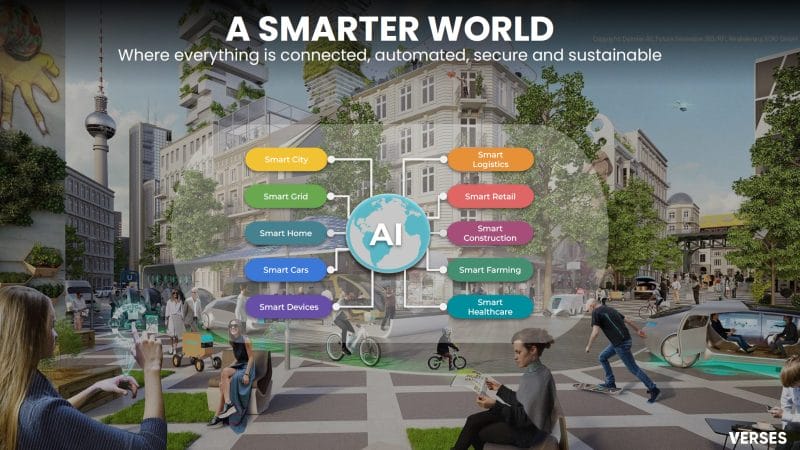
If COSM works as well as the logistics solution, this technology will be embedded in the architecture of Web 3.0, which is the mother ship from which spatial computing is launched.
Waves of ‘smart money’ are betting that Web 3.0 will dominate the future.
Legendary angel investor Andreessen Horowitz (A16Z) – who made bank on Twitter and Airbnb – recently created a $4.5 billion fund for Blockchain companies and Web 3.0 start-ups.
Using a decentralized blockchain with automation driven by artificial intelligence (AI), Web 3.0 is reshaping the way individuals and corporations function.
Web 3.0 is destined to create a new class of millionaires – and break a few hearts. For your average retail investor, it’s pointy-headed stuff.
Not easy to conduct due diligence on a business model that ‘Aggregates liquidity supply’, ‘Trace-blocks API requests’ or ‘Reconfigures EVM codes’.
Let’s review how we got here.
Web 1.0 (1989-2005) was like a magazine projected onto a computer screen. You could scroll and read, but only coders could publish sophisticated content.
Web 2.0 (2006-2022) turned reading-hour into a conversation. Supported by JavaScript and HTML5 anyone could publish content. Meanwhile big corporations like Google and Amazon captured the explosion of personal data and used it to create surgically targeted ads.
Web 3.0 is still in its infancy.
Detractors of Web 3.0 point to all the hogwash, like Non-Fungible Toilet Paper and Filthy Useless Coins. But new waves of technology always attract half-baked ideas. When the 2000 dot.com bubble popped, 99% of the companies failed. But there was nothing wrong with the internet – it was all the flimsy junk attached to it.
Typically, new technology companies incubate, Beta-test, pivot and run endless free pilot programs before generating a penny of revenue.
According to Investopedia, The Valley of Death “refers to the period of time from when a start-up firm receives an initial capital – to when it begins generating revenues.”
Most tech companies perish in this valley.
Verses has already walked through the Valley of Death – emerging alive and kicking on the other side with a USD $9 million order, that has a renewal option worth USD $17.5 million.
The CEO, Gabriel Rene. wrote the book on the spatial web.
That’s not a metaphor.
He literally co-authored a #1 International Bestseller “The Spatial Web – How Web 3.0 Connects Humans, Machines, and AI to Transform the World”.
Rene has worked with many Fortune 500 companies including Verizon, Sony, Intel, Coca-Cola, Microsoft, Yahoo, Qualcomm, Apple, Samsung, Universal, AT&T, Obama Campaign, Condé Nast, Elle Magazine and the Cannes Film Festival.
Full Disclosure: Verses Technologies is an Equity Guru marketing client

